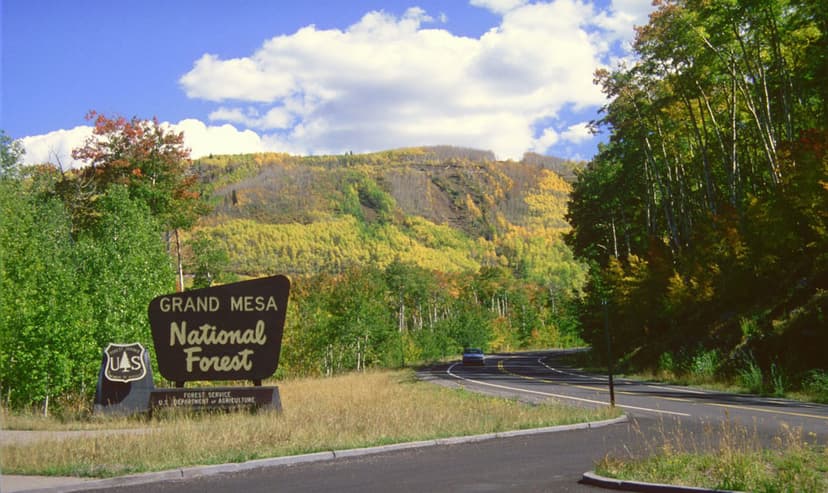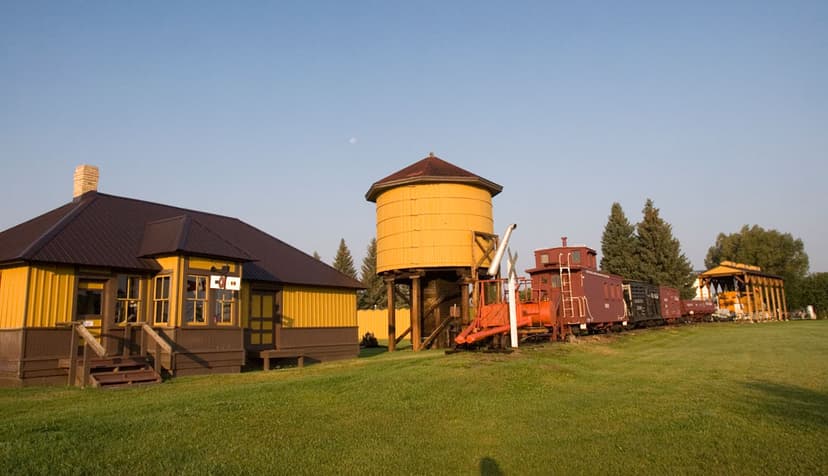It’s a special experience following the changing colors across the state on leaf-peeping excursions to see your favorite places (or completely new ones) ignited in shades of gold and amber. And with canine-friendly trails all across the state, you can share the joy of discovery with your best friend all season long.
From easy and moderate hikes to the more challenging endeavor, find the perfect hike for you and your pup in the list below:
1. Silver Jack Shoreline Trail
Near Montrose
Easy, about 1.5 miles one way
Canine Notes: Keep your dogs close and under voice control
Experience the golden season at its best from the shores of 325-acre Silver Jack Reservoir, where you can witness the spires of the San Juan Mountains framed by forests accented with ribbons of vibrant orange and yellow. Follow the road past the Uncompahgre National Forest/Silver Jack fishing access sign to get to the trailhead and parking lot. Pups aren’t allowed in the water, but they are often spotted roaming freely along the trails.
2. Coyote Trail
Rifle
Easy, about 1 mile round trip
Canine Notes: Dogs must be leashed
The star of Rifle Falls State Park is undoubtedly the falls, a triple cascade surrounded by moss-cloaked rocks and a canopy of deciduous beauties that become splashed with gold during the color change. Dogs are welcome on all of the park’s trails (with the exception of the adjacent wildlife area). Coyote Trail offers nice sights of the falls with plenty of scenic overlooks and unique access to the limestone caves.
3. Mule Deer Trail
Golden
Easy-Moderate, about 9 miles round trip
Canine Notes: Dogs must be leashed
While several trails at Golden Gate Canyon State Park lead to Frazer Meadows — known for its swoon-worthy autumn panoramas — the Mule Deer Trail offers a little more solitude for you and your four legged friend. Start at the Ole’ Barn Knoll trailhead and meander through aspen groves, sprawling meadows and evergreen woodlands. Looking for a shorter route to Frazer Meadows? Try the Horseshoe Trail, which will get you to leafy splendor in less than 2 miles.
4. The Crags Trail
Near Divide
Moderate, about 5 miles round trip
Canine Notes: Dogs must be leashed
Named for rock formations that resemble stacks of hot cakes that dot the landscape, The Crags Trail travels through forests populated with fragrant pines, sunny-colored quaking aspens and an open field with a little creek. Prepare to be wowed by the view at the trail’s climax of Pikes Peak and the surrounding Rocky Mountains, while keeping an eye out for ancient bristlecone pines.
5. East Lake Creek Trail
Near Edwards
Moderate, about 5 miles round trip
Canine Notes: Keep your dogs close and under voice control
This portion of the East Lake Creek Trail traverses dense forests in Colorado’s Holy Cross Wilderness and is beloved by locals who like to hike with their furry friends in tow. Find serenity amid the bounty of imposing aspens, whose canopy of leaves resemble a gilded ceiling when a breeze shuffles through. Turn around at the 2.5-mile halfway point at the wooden bridge, or keep going — the trail continues for another 10 miles.
6. Lost Lake Via Hessie Trail
Eldora
Moderate, about 4 miles round trip
Canine Notes: Dogs must be leashed
Located in the Roosevelt National Forest near Nederland, the Lost Lake via Hessie Trail makes for an easy day trip from the Front Range area. Take in breathtaking views as the trail traverses aspen groves, waterfalls and yellow mountain vistas on its swift ascent to Lost Lake. Trailhead parking is limited; however, a free shuttle regularly transports hikers to and from Nederland on Fridays and Weekends during the peak season.
7. Emmaline Lake Trail
Fort Collins
Difficult, about 12 miles round trip
Canine Notes: Dogs must be leashed
The first couple miles of this out-and-back route are touted to be a walk in the park, but the last 1 to 2 miles contain sharp switchbacks as the trail makes its ascent to two alpine lakes. Cirque Lake and its equally attractive big sis — Emmaline Lake — are gorgeous, framed with a mix of fiery hues. The Emmaline Lake/Mummy Pass trailhead is located on a dirt road just past Tom Bennett Campground.
8. Jud Wiebe Memorial Trail
Near Telluride
Difficult, about 3 miles round trip
Canine Notes: Dogs must be leashed
Named for a Forest Service recreation manager who designed the route in the mid-1980s but passed away before it was completed, Jud Wiebe Trail offers wraparound views of Telluride, including the ski resort, Bridal Veil Falls and glowing aspen groves. The elevation gain is about 1,300 feet, and there are several streams for dogs to dip their paws into. To get to the trailhead, walk to the top of North Aspen Street and cross the bridge on the left.
9. West Maroon Trail
Aspen
Difficult, 11 miles one way
Canine Notes: Dogs must be leashed
A bucket-list item for many Coloradans, the West Maroon Trail between Aspen and Crested Butte offers off-the-charts views of the Elk Mountains punctuated with swaths of golden aspens and verdant pines. The climb to the West Maroon Pass summit includes a 3,000-foot elevation gain, but the final 4-mile descent to Crested Butte takes ramblers through woodlands dense with reds and golds. Find the trailhead at the Maroon Bells, where selfies of you and your pooch in front of the most-photographed scene in North America are a must.
4 Tips for Hiking with Your Dog in Colorado
1. Leave No Waste
Always pick up after your pets and pack out their waste to a trash can in order to prevent the spread of disease, maintain pleasant conditions and preserve the natural ecosystem. Learn more about the etiquette of poop.
2. Recognize Your Limits
Difficult trails that include steep vertical climbs, traversing long distances and/or substantial elevation gains should only be pursued by experienced dog-and-human hiking duos. Dress in layers for our famously unpredictable weather, follow leash laws where indicated and carry plenty of water for both of you.
3. Know When to Go
Trees that dwell at higher elevations must prepare for winter weather earlier, so they’re naturally programmed to develop autumn colors before their leafy friends at lower elevations. September is typically an ideal time to witness striking transformations on the trails. One strategy: Select your travel dates in advance, but not your destination. Then go wherever the color is.
4. Keep Dogs on a Leash
Keeping your dog leashed ensures your pet, other pets, wildlife and other people on the trail can safely enjoy the hike.
Want More?
Check out ways to have winter fun with your pup
Consult our Sleep Somewhere Cool blog to find plenty of dog-friendly lodgings






